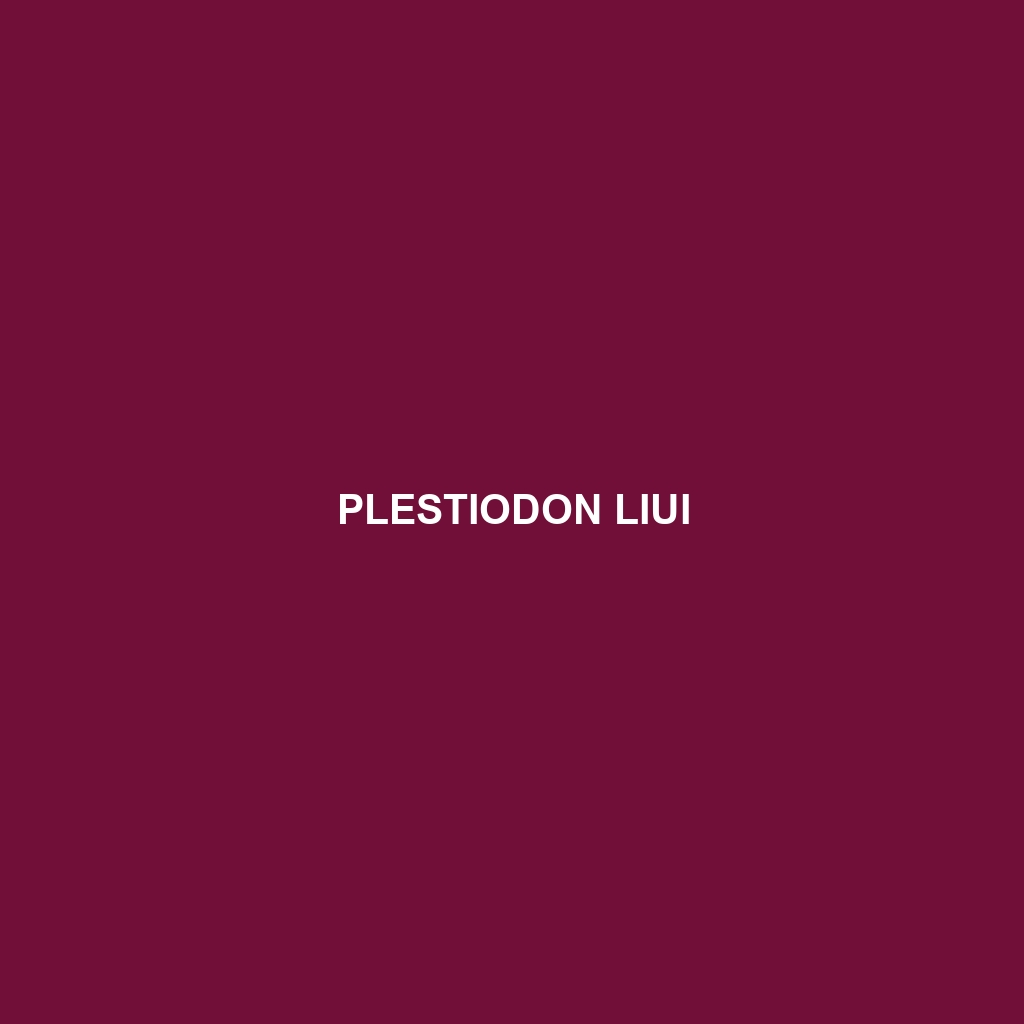Common Name
Plestiodon liui
Scientific Name
Plestiodon liui
Habitat
Plestiodon liui is primarily found in the temperate forests of eastern Asia, particularly in regions characterized by lush vegetation and diverse microhabitats. This species thrives in environments rich in leaf litter, rocks, and fallen logs, which provide excellent cover and hunting grounds. The geographical range of Plestiodon liui includes the humid subtropical climates of southern China and parts of Taiwan. These habitats are often associated with high levels of rainfall and mild temperatures, making them ideal for various reptilian species. Additionally, some populations may inhabit adjacent grasslands and savannas where they can access a variety of foraging opportunities.
Physical Characteristics
Plestiodon liui exhibits distinct physical traits that set it apart from other lizard species. Typically, adults reach a length of 15 to 25 centimeters, making them a medium-sized lizard. Their bodies are elongated with a slightly flattened shape, allowing for agile movement through dense undergrowth. The coloration of Plestiodon liui is one of its most striking features; they boast a vibrant dorsal surface ranging from dark brown to olive-green, often punctuated with lighter spots or stripes. This coloration not only aids in camouflage but also plays a role in thermoregulation. One unique feature of this species is its ability to display changes in color intensity based on environmental conditions, enhancing its capacity for adaptation.
Behavior
Typically diurnal, Plestiodon liui engages in various activities throughout the day, including basking in the sun to regulate body temperature and foraging for food. They exhibit a range of behaviors, such as territorial displays, which can include push-ups and tail waving to deter competitors and attract mates. Mating rituals occur in late spring, where males may engage in competitive displays to win over females. While primarily ground-dwelling, these lizards are adept climbers and can often be spotted on low branches or rocks. During the hotter months, Plestiodon liui may adopt a more nocturnal lifestyle, seeking cooler temperatures and reduced predation risk.
Diet
Plestiodon liui is classified as an insectivore, primarily feeding on a range of invertebrates such as beetles, ants, and various soft-bodied insects. Their diet is supplemented by small crustaceans and occasionally plant matter, showcasing some omnivorous tendencies. Their feeding habits are quite opportunistic, often consuming whatever prey is abundantly available in their environment. The ability to adapt their diet according to seasonal changes and prey availability helps ensure their survival in varying conditions.
Reproduction
Mating for Plestiodon liui occurs in the spring, often around April and May. After mating, females lay clutches ranging from 4 to 10 eggs in hidden areas such as soil or leaf litter. The incubation period lasts approximately 60 to 90 days, depending on the environmental conditions. Upon hatching, juveniles are miniature versions of adults and are independent from birth, which decreases the risk of predation on the vulnerable young. Parental care is limited, but adult females often choose to nest in locations that provide optimal warmth and protection for successful hatching.
Conservation Status
The conservation status of Plestiodon liui is currently classified as vulnerable due to habitat destruction from urban development and agricultural expansion. Conservation efforts are underway to protect their natural habitats through the establishment of reserves and fostering public awareness regarding the importance of biodiversity. While the lizard has an adaptability to various environmental conditions, ongoing monitoring is essential to ensure sustainable populations.
Interesting Facts
One of the most fascinating aspects of Plestiodon liui is its remarkable ability to display autotomy, a defense mechanism where it can shed its tail to escape predators. The tail will later regenerate, although the new tail may differ in color and texture from the original. This adaptation serves to distract predators while the lizard makes its getaway. Additionally, studies suggest that these lizards have sophisticated social structures, with certain dominance hierarchies influencing their behavior.
Role in Ecosystem
Plestiodon liui plays a vital role in its ecosystem as both a predator and prey. It helps control populations of insects, which can otherwise become overabundant and disrupt the ecological balance. Additionally, as a prey species, it provides nourishment for a variety of avian and terrestrial predators. The ecological interactions of Plestiodon liui help maintain a healthy ecosystem, contributing to nutrient cycling, pest control, and food web dynamics. Their presence indicates a well-functioning environment and reflects the overall health of the habitat they inhabit.
